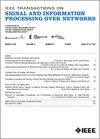Unifying Epidemic Models With Mixtures
IF 3
3区 计算机科学
Q2 ENGINEERING, ELECTRICAL & ELECTRONIC
IEEE Transactions on Signal and Information Processing over Networks
Pub Date : 2024-03-11
DOI:10.1109/TSIPN.2024.3375600
引用次数: 0
Abstract
The COVID-19 pandemic has emphasized the need for a robust understanding of epidemic models. Current models of epidemics are classified as either mechanistic or non-mechanistic: mechanistic models make explicit assumptions on the dynamics of disease, whereas non-mechanistic models make assumptions on the form of observed time series. Here, we introduce a simple mixture-based model which bridges the two approaches while retaining benefits of both. The model represents time series of cases as a mixture of Gaussian curves, providing a flexible function class to learn from data, and we show that it arises as the natural outcome of a stochastic process based on a networked SIR framework. This allows learned parameters to take on a more meaningful interpretation compared to similar non-mechanistic models, and we validate the interpretations using auxiliary mobility data collected during the COVID-19 pandemic. We provide a simple learning algorithm to identify model parameters and establish theoretical results which show the model can be efficiently learned from data. Empirically, we find the model to have low prediction error. Moreover, this allows us to systematically understand the impacts of interventions on COVID-19, which is critical in developing data-driven solutions for controlling epidemics.用混合物统一流行病模型
COVID-19 大流行强调了对流行病模型进行深入理解的必要性。目前的流行病模型分为机理型和非机理型两种:机理型模型对疾病的动态做出明确假设,而非机理型模型则对观察到的时间序列形式做出假设。在此,我们介绍一种简单的基于混合物的模型,该模型在保留这两种方法优点的同时,也在这两种方法之间架起了一座桥梁。该模型将病例的时间序列表示为高斯曲线的混合物,为从数据中学习提供了一个灵活的函数类别,我们还展示了该模型是基于网络化 SIR 框架的随机过程的自然结果。与类似的非机理模型相比,这使得学习到的参数具有更有意义的解释,我们使用 COVID-19 大流行期间收集的辅助流动数据验证了这些解释。我们提供了一种简单的学习算法来识别模型参数,并建立了理论结果,表明该模型可从数据中有效学习。根据经验,我们发现该模型的预测误差很小。此外,这使我们能够系统地了解干预措施对 COVID-19 的影响,这对开发数据驱动的流行病控制解决方案至关重要。
本文章由计算机程序翻译,如有差异,请以英文原文为准。
求助全文
约1分钟内获得全文
求助全文
来源期刊

IEEE Transactions on Signal and Information Processing over Networks
Computer Science-Computer Networks and Communications
CiteScore
5.80
自引率
12.50%
发文量
56
期刊介绍:
The IEEE Transactions on Signal and Information Processing over Networks publishes high-quality papers that extend the classical notions of processing of signals defined over vector spaces (e.g. time and space) to processing of signals and information (data) defined over networks, potentially dynamically varying. In signal processing over networks, the topology of the network may define structural relationships in the data, or may constrain processing of the data. Topics include distributed algorithms for filtering, detection, estimation, adaptation and learning, model selection, data fusion, and diffusion or evolution of information over such networks, and applications of distributed signal processing.
 求助内容:
求助内容: 应助结果提醒方式:
应助结果提醒方式:


